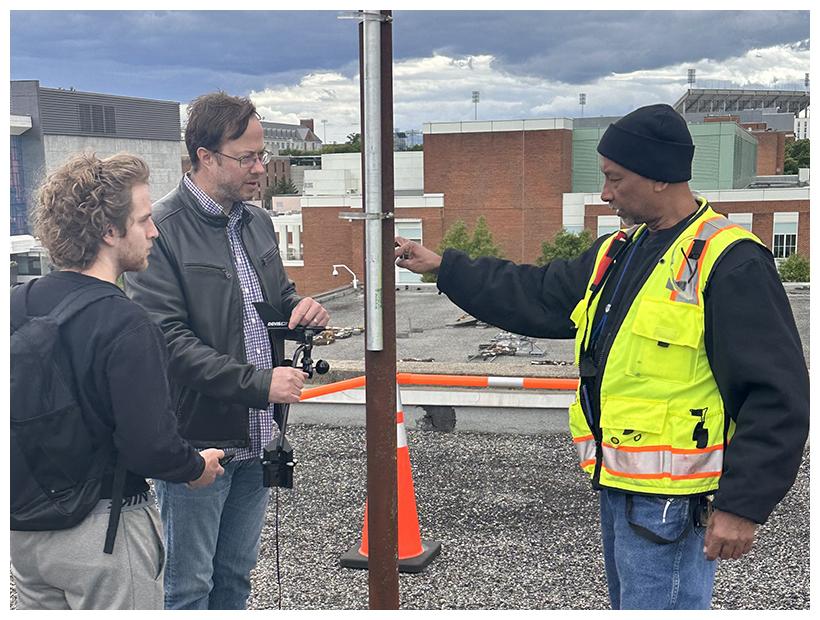
Facilities Management (FM) and the Department of Atmospheric and Oceanic Sciences (AOSC) are teaming up to install rooftop weather stations as part of an exciting new project. This collaborative effort aims to build a weather network that will provide detailed, real-time data on weather conditions across campus and provide a better understanding of the impact of global climate change. This micronet of weather data stations across campus will aid forecasters, students, and FM workgroups.
The rooftop stations include sensors that measure wind speed and direction, rainfall rates and amounts, barometric pressure, dew points, and temperatures. Future installations could also measure air quality and greenhouse gasses – important information for climate researchers.
Dr. Tim Canty, associate professor in AOSC, and Brian Trest, head of FM’s Incident Response Unit (IRU) work together to identify the best locations on campus. Trest and his team provide access to the rooftops, locate the best spot for mounting the weather station and provide electrical connections. Once everything is prepped, Dr. Canty and his students set up the sensors.
This mutually beneficial project provides hands-on experience and research project opportunities for students and important decision-making data for FM teams. The hyper-local data generated by the stations and customized alerts for heavy rainfall will allow FM’s IRU to get out in front of potential flooding situations.
In addition to warnings of imminent flooding, the campus-generated data can be more precise in warning of extreme temperatures for FM’s many outdoor workers, or give notice when high winds make it too dangerous to work on rooftops. Current public weather services can’t provide this level of detail.
Three stations have been installed so far with plans to have ten working stations by the end of the year. Current locations include the Atlantic Building (home of AOSC), the UMD Golf Course, and the A.V. Williams Building. The next station location has not yet been determined, but will likely be in the south campus area. The goal is to measure weather data in every corner of the campus.
Trest and Canty are mutually appreciative of the collaboration. “Having access to real conditions on campus is a game changer for us,” says Trest. “Without Facilities, this doesn’t happen,” asserts Canty. “You guys have been a huge help.”
Micronet data is available for viewing on the UMD Weather website.
